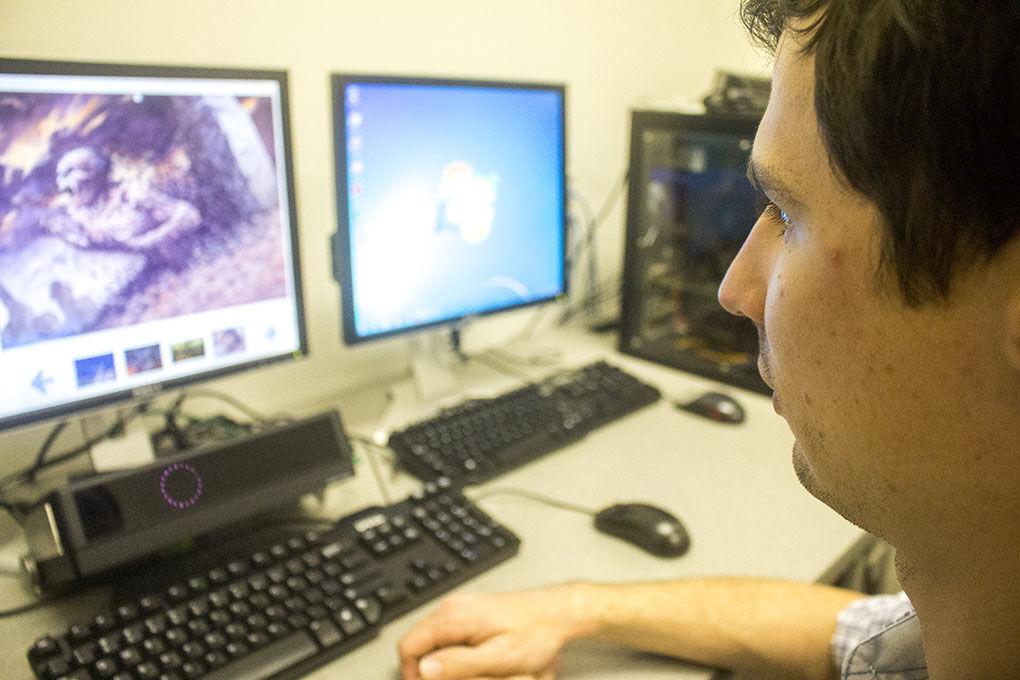Texas State is designated as a Hispanic Serving Institution eligible for grants. However, that grant money does not specifically go toward underrepresented students. Rather, it primarily supports research across academia.
Texas State has received more than $30 million in grant money because of its designation as an HSI, according to the Office of Research and Sponsored Programs.
To be distinguished as an HSI there must be an enrollment of 25 percent Hispanic undergraduate full-time students. By 2010, the university became eligible to apply for research grants that are exclusive to universities with a commitment to a specific demographic group of students.
Chief Research Officer Walter Horton said the university grew into an HSI organically. Horton said while the majority of grant money is spent on student support services, none of the programs allow direct scholarships. Instead, HSI’s use the grants to build infrastructure and carry out the vision of the research institution.
“We’re a little bit unusual for an HSI because we do have a very strong research portfolio,” Horton said. “In many cases that is not true. (Grant money) lets an HSI build capacity for carrying out research and then brings Hispanic and other students into the programs.”
Horton said securing grants furthers the development of becoming a research institution and raising the university’s enrollment.
The designation allows the university to apply and pull money from federal grants meant to assist minority student groups, like Hispanics.
“Not only can we get money, which is great, but it’s really the value of creating a diverse workforce geared toward research and scholarship activity,” Horton said.
Araceli Martinez Ortiz, executive director of the LBJ Institute for STEM Education and Research, is always on the lookout for opportunities to conduct research. Ortiz said and her team worked on the gaps between the changes of diversity in the STEM workforce and the contrast of engineering higher education.
However, Ortiz is most proud of being able to research a specific question or notice a trend happening on campus. Getting administration to take initiative and sustain programs may not have been available if it was not for the research and grant money.
“The university benefits because all our work took place at the university,” Ortiz said. “We were able to develop programs to support undergraduate and graduate students. We hired undergraduate and graduate students to participate in programs and we changed the ways we teach certain courses.”
Ortiz’s research is one of many utilizing federal grant money because of the university’s distinction as an HSI. She said researchers in literature, music and academia find opportunities to propose for grant money to fund their research to serve underrepresented students.
According to Evy Gonzales, Director of Strategic Research Initiatives Texas State and the University of Houston have gone back and forth as being the largest HSI’s in recent years.
“Being an HSI is more than just going after this pot of money,” Gonzales said. “It’s about letting people know that we are serving a really cool population. We mirror the diversity in Central Texas.”
Institutions can apply for 15 federal grants annually to serve minority groups. Gonzales said the university is more competitive and marketable in securing these grants because of the work done as a research institution.
Additionally, Gonzales said there is a multiplier effect as a result of the funding received and that it imprints upon children within the Hays and Comal County communities.
“It’s enabled the LBJ institute to offer programming to kids in San Marcos CISD and surrounding school districts like Hays and Comal,” Gonzales said.
However, Gonzales said the designation’s impact on the community remains unquantifiable due to factors involved in the consolidation of specific research programs, incentives and initiatives.
Categories:
Hispanic Serving Institutional grants go to support research
May 22, 2018
0
Donate to The University Star
Your donation will support the student journalists of Texas State University. Your contribution will allow us to purchase equipment and cover our annual website hosting costs.
More to Discover














